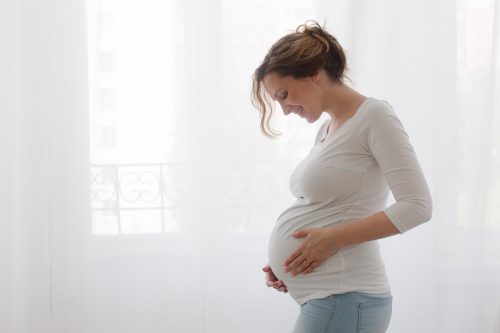
This week, a baby was born after the world’s first successful robot-assisted uterine transplantation. The birth was achieved via planned cesarean section and all family members are doing well after the procedure. This story was recently published by the University of Gothenburg and marks a milestone in the integration of robotics into surgery.
“It’s a fantastic feeling to deliver such a special, longed-for child. To have been part of the whole process, from the first meeting with the couple to the uterus transplant, and now to see everyone’s joy when what we’ve hoped for becomes reality. It’s simply wonderful,” said Pernilla Dahm-Kähler, gynecologist and leading robot-assisted surgeon on the team. Dahm-Kähler is also a research scientist at Sahlgrenska Academy, University of Gothenburg.
This birth is the first within the research project regarding the robotic procedure. The infant was brought into the world after his mother received a uterine transplant through robot-assisted surgery that is considered less invasive to the donor than traditional open operation.
The donor is operated on via one-centimeter incisions in their abdomen, with robotic arms holding surgical instruments guided by two surgeons at each of the patient’s sides. These surgeons operate a short distance away from the patient, using a joystick tool and a magnified 3D image that offers precise operation.
Another incision is made towards the tail end of the procedure to remove the uterus, which is immediately implanted in the recipient via traditional open surgery. This minimally invasive technique is much easier on the donor, who typically displays faster recovery time.
“This is an extremely important step towards developing the surgery involved in uterine transplantation, and its safety,” said research leader Mats Brännström, Professor of Obstetrics and Gynecology at Sahlgrenska Academy.
This transplantation was done in Sweden’s Sahlgrenska University Hospital in October of 2017. Ten months after the transplant occurred, and in vitro fertilized embryo was inserted into the healed uterus. Pregnancy was confirmed several weeks later with a detectable heartbeat. No complications occurred with the pregnancy and the mother’s health remained normal as well. The birth was successful achieved via a planned C-section after nine months of pregnancy.
The researchers are hopeful that one day robotics will be able to facilitate the operation for both the donor and the recipient. “In the future, we’re also going to be able to transplant the uterus in the recipient using robot-assisted keyhole technique,” claimed Niclas Kvarnström, the project’s transplant surgeon who is responsible for reconstructing the complex blood vessel structure of the recipient’s uterus.
The child is the ninth born in Sweden after a uterine transplant, but the first after this robotic-assisted transplant operation. More childbirths are expected following this procedure, with six of the technology-assisted transplants being done in 2017-2018. This research team is also the first to have achieved a successful birth after using a uterus from a deceased donor in a transplant. Worldwide, only 15 babies have been born from a transplanted uterus.
This innovative and efficient robotic technique is the product of over 15 years of research at Sahlgrenska Academy and is now functioning in other parts of the world as well.
A healthy baby boy has been welcomed into the world — the first child born following a robot-assisted uterus transplant. https://t.co/oh46IBTPYI
— News 6 WKMG (@news6wkmg) April 10, 2019
Source: University of Gothenburg







 © 2025 Mashup Media, LLC, a Formedics Property. All Rights Reserved.
© 2025 Mashup Media, LLC, a Formedics Property. All Rights Reserved.